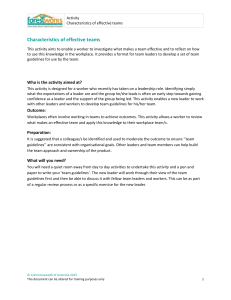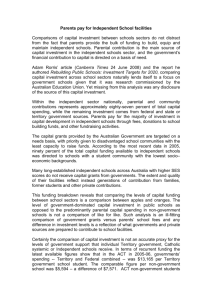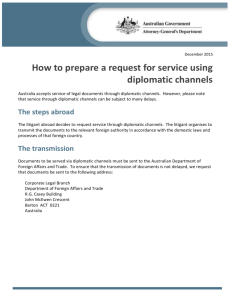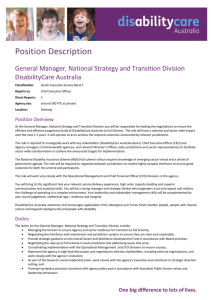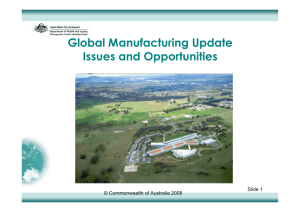national priority projects - Department of Communities, Child Safety
advertisement
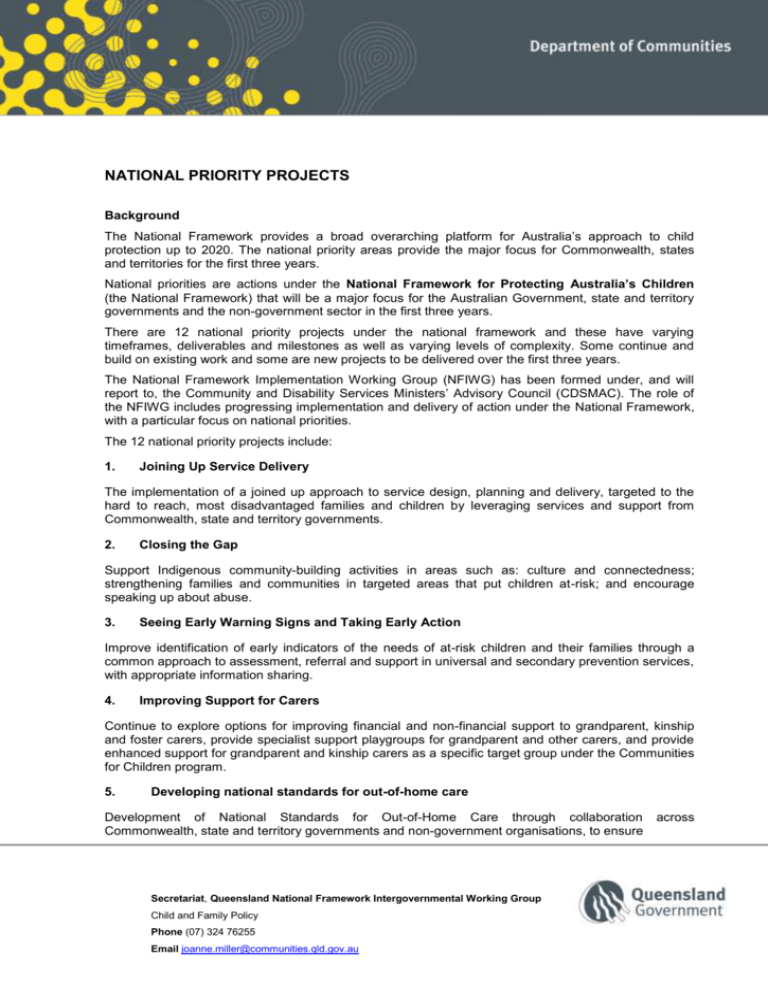
NATIONAL PRIORITY PROJECTS Background The National Framework provides a broad overarching platform for Australia’s approach to child protection up to 2020. The national priority areas provide the major focus for Commonwealth, states and territories for the first three years. National priorities are actions under the National Framework for Protecting Australia’s Children (the National Framework) that will be a major focus for the Australian Government, state and territory governments and the non-government sector in the first three years. There are 12 national priority projects under the national framework and these have varying timeframes, deliverables and milestones as well as varying levels of complexity. Some continue and build on existing work and some are new projects to be delivered over the first three years. The National Framework Implementation Working Group (NFIWG) has been formed under, and will report to, the Community and Disability Services Ministers’ Advisory Council (CDSMAC). The role of the NFIWG includes progressing implementation and delivery of action under the National Framework, with a particular focus on national priorities. The 12 national priority projects include: 1. Joining Up Service Delivery The implementation of a joined up approach to service design, planning and delivery, targeted to the hard to reach, most disadvantaged families and children by leveraging services and support from Commonwealth, state and territory governments. 2. Closing the Gap Support Indigenous community-building activities in areas such as: culture and connectedness; strengthening families and communities in targeted areas that put children at-risk; and encourage speaking up about abuse. 3. Seeing Early Warning Signs and Taking Early Action Improve identification of early indicators of the needs of at-risk children and their families through a common approach to assessment, referral and support in universal and secondary prevention services, with appropriate information sharing. 4. Improving Support for Carers Continue to explore options for improving financial and non-financial support to grandparent, kinship and foster carers, provide specialist support playgroups for grandparent and other carers, and provide enhanced support for grandparent and kinship carers as a specific target group under the Communities for Children program. 5. Developing national standards for out-of-home care Development of National Standards for Out-of-Home Care through collaboration Commonwealth, state and territory governments and non-government organisations, to ensure Secretariat, Queensland National Framework Intergovernmental Working Group Child and Family Policy Phone (07) 324 76255 Email joanne.miller@communities.qld.gov.au across consistent, standards of care for children and young people. These standards will also enable data to be collected and compared nationally. 6. Building capacity and expertise To support the education, professional development, and retention of the child protection and welfare workforce, including a focus on enabling the Indigenous workforce to be more actively involved in tertiary child protection. That the Commonwealth take a broader human services definition of ‘workforce’ to look at ways that professionals in a range of fields can contribute to the protection of children, including with cultural sensitivity. 7. Enhancing the evidence base The data collection priority will review and improve data collections relating to child protection, homelessness and juvenile justice to improve national reporting. This priority aims to enhance knowledge of children’s interactions with the child protection system in order to inform future policy and service provision. 8. Filling the research gaps Develop a National Research Agenda, including research priorities, to underpin the National Framework for Protecting Australia’s Children 2009-2020. 9. Transitioning to independence Increase support through non-government organisations for young people leaving care to establish their independence. Continue and improve state and territory initiatives targeting young people as they leave care. 10. Responding to sexual abuse Investigate options for best practice therapeutic programs for children displaying sexually abusive behaviours. Children are protected from all forms of sexual exploitation and abuse through targeted prevention strategies, and survivors are supported by the community, and through specific therapeutic and legal responses. 11. Advocating nationally for children and young people Explore the potential role for a national (Australian) Commissioner for Children and Young People was canvassed in the discussion paper, Australia’s Children: Safe and Well, released in May 2008. In subsequent consultations to develop the National Framework For Protecting Australia’s Children, a number of stakeholders, including non-government organisations and the general public, called for the introduction of a National Commissioner for Children and Young People to champion and advocate for the rights and wellbeing of children. 12. Sharing Information Expand the national protocol for information sharing to Medicare Australia, and the Child Support Agency. Investigate options to expand the information sharing protocol to include the Department of Immigration and Citizenship and the Family Court.
